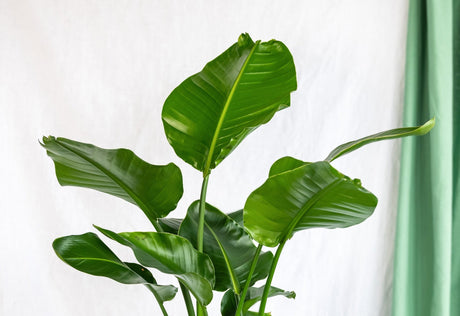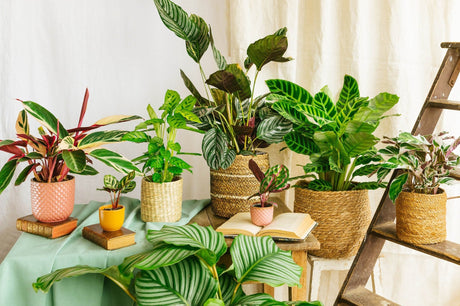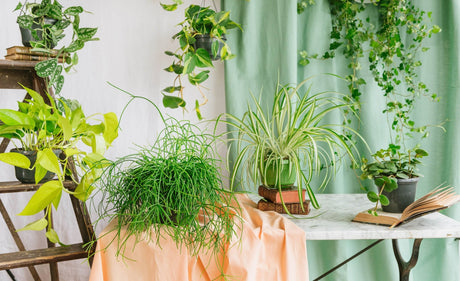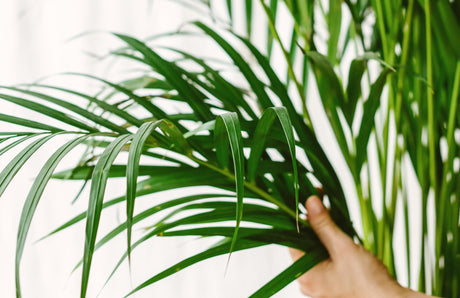Fatsia Japonica is distinguished by its large, deeply lobed webbed leaves, which resemble those of a open hand. The leaves are green intense and provide a touch of freshness and vitality to any interior space.
1. Watering Fatsia Japonica
Watering is one of the essential aspects of maintenance of Fatsia Japonica indoors. Proper management of moisture of the soil helps to maintain healthy growth and lush of this exotic plant.The frequency of watering varies as a function of factors such as conditions of light, temperature ambient and humidity. In general, in spring and in summer, when the plant is in period of growth active, water when the top third of the soil feels dry. This could mean watering approximately once times per week. In autumn and winter, when growth slows, reduce the frequency of watering approximately every two to three weeks.
Tip : Iinsert your finger into the ground to approximately 2-3 centimeters of depth. If the soil is dry at this level, it is time to water.Avoid overwatering, as the roots of Fatsia Japonica are susceptible to rot.
2. Watering techniques
Watering from below
Prefer watering from below by placing the pot in a saucer filled with water. Let the plant absorb the water by capillary action for about 30 minutes, then empty the saucer to avoid waterlogging.Deep Watering
When watering, make sure the water reaches the roots by watering slowly and evenly. Avoid watering only the soil surface. Water must penetrate the substrate to encourage root growth.3. The exhibition of Fatsia Japonica
Fatsia Japonica thrives in conditions of light indirect bright . Avoid direct rays from the sun, as this can burn the delicate leaves . Place the plant a few meters from a window exposed to light filtered, such as a window facing to east or west.Although the Fatsia Japonica tolerates a certain shadow, it does not thrive not in dark or poor lit places. Avoid the corners of the room where the light is limited, as this can cause etiolation and poor growth.
4. When should I repot my Fatsia Japonica?
The Fatsia Japonica, like many houseplants, can benefit from repotting periodically to ensure growth healthy and vigorous.The time ideal for repotting a Fatsia Japonica is generally in spring, at the beginning of its period of growth active. This gives the plant enough time to establish itself in its new pot before the busiest growing season.
The signes indicators of repotting:
Root crowding
If you notice that the roots of the Fatsia Japonica are starting to completely fill the pot and the substrate is no longer holding water properly, this is a sign that the plant needs more space for its roots.Pot overflow
If roots are starting to grow out of the pot's drainage holes or the plant seems too large for its current container, it's time to repot.Slowed growth
If your Fatsia Japonica's growth seems to be slowing down, new leaves are less abundant, or the plant seems less vigorous, it may indicate that it has exhausted the nutrients available in the current soil and needs space. and a fresh substrate.Substrate degradation
If the pot substrate is compacted, broken down, or has lost its airy structure, it's time to repot to provide a new nutrient-rich soil mix.5. What fertilizer should I use for my Fatsia Japonica?
To promote healthy and vigorous growth of your Fatsia Japonica indoors, it is important to provide it with an fertilizer appropriate. Choose a fertilizer balanced and specifically formulated for broadleaf houseplants.Fertilizer frequency
In spring and summer, when your Fatsia Japonica is actively growing, fertilize every 4-6 weeks. In autumn and winter, reduce the frequency to about every 2 months, or even less, because the plant slows down its growth.Dosage
Carefully follow the manufacturer's instructions on the fertilizer package for the recommended dosage. Avoid over-fertilizing, as this may cause damage to the plant's roots.Application
For liquid fertilizers, mix the fertilizer with water according to the instructions on the package, then water the plant with this mixture. For slow-release solid fertilizers, follow package directions for application when repotting.Watering after application
After applying fertilizer, water the plant lightly to help distribute the nutrients throughout the soil.6. How do I multiply my Fatsia Japonica?
Fatsia Japonica can be propagated by cuttings. Here is a common method for propagating your plant:Preparing cuttings
Choose a healthy, non-flowering stem of your Fatsia Japonica. Cut a section of stem about 10 to 15 centimeters in length. Make sure the cutting has at least one or two nodes (places where the leaves attach to the stem).Removal of lower leaves
Carefully remove the leaves near the base of the cutting. Leave a few leaves intact at the top end.Planting in the substrate
Place the cutting in a well-draining potting mix. Insert the cutting into the substrate until it reaches the lower node. Lightly tamp the substrate around the cutting to stabilize it.Watering
After planting the cutting, water it lightly to moisten the substrate.7. Diseases of Fatsia Japonica
Fatsia Japonica is generally a plant hardy, but like all plants it can be prone to certain diseases and problems. Here are some diseases and problems that you may deal with your Fatsia Japonica :Root rot
Excessive irrigation or poorly drained soil can lead to root rot. Signs include yellowing leaves, wilting and lack of growth. To prevent this, make sure the pot has good drainage and adjust the watering frequency accordingly.Oidium
Powdery mildew is a fungal disease that manifests as a white/gray powdery coating on the leaves. It can be treated with appropriate fungicides. Be sure to maintain good air circulation around the plant.Leaf spots
Brown or black spots on the leaves can be caused by various fungal infections. Remove affected leaves to prevent spread. Use fungicides if needed.Cochineals
Scale insects are small insects that attach themselves to leaves and suck sap, leaving sticky spots called "honeydew". Use an appropriate insecticide or insecticidal soap solution to get rid of them.Red Spiders
Spider mites are mites that weave fine webs and suck sap from leaves. Leaves become mottled and may drop. Use a water jet to remove the mites and use an acaricide if necessary.Whitefly
Whiteflies are small flying insects that congregate on leaves. They suck sap and can spread disease. Use sticky traps or insecticides to control them.Bacterial wilt
Symptoms include rapid leaf wilting and stem decay. There is no effective treatment for this disease. Be sure not to overwater and avoid damaging the plant, as this can encourage bacteria to enter.Chlorosis
Chlorosis is a deficiency of nutrients, usually iron, that results in yellowing of leaves. Use a balanced fertilizer and make sure the soil pH is adequate.8. Delivery and receipt of your plant
- Your plant is dry
- Is your plant wet ? Let the potting soil dry.
- Should I repot my plant right away ? No ! Wait until next spring or for signs that your plant needs repotting.






